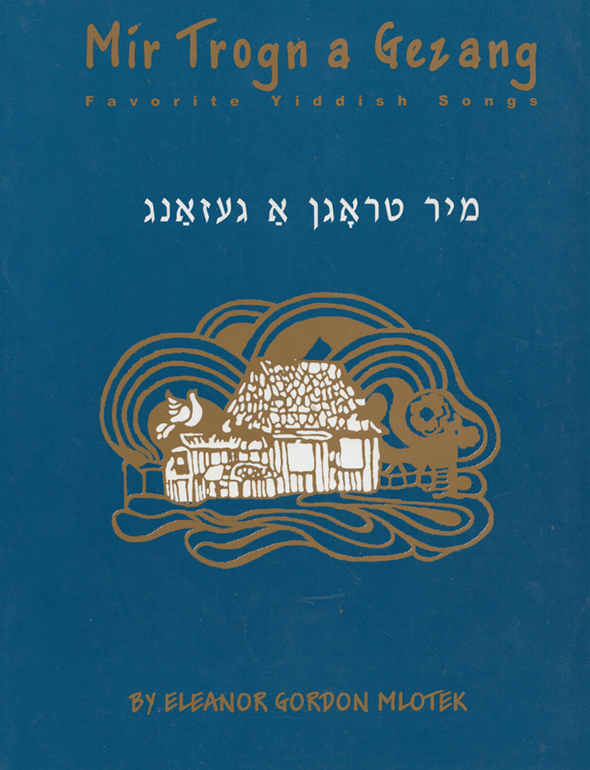Folk song, published by Mikhl Gelbart in 1938.

All I have is an old dime
which isn’t even mine.
Let’s all be happy,
come into the bar with me,
drink some liquor, drink some wine.
[As if] there is no tomorrow, there is no today –
no friends and no relations…
If I had a whole dollar –
then the treat would be on me.
I have no wife and no children –
so I am as free as the wind…
Let’s not be like old witches –
lets make the weekdays into Shabes!
Hob ikh mir an altn daym —
lz der daym oykh nit mayn.
CHORUS:
Lomir ale freylekh zayn,
Kumt mit mir in shenk arayn,
Trinken bronfn, trinken vayn!
Nit keyn morgn, nit keyn haynt —
Nit keyn khaver, nit keyn fraynt. . .
Hob ikh mir a gantsn toler —
Vel ikh zayn der gantser tsoler.
Hob ikh nit keyn vayb un kind —
Bin ikh fray vi der vint. . .
Lomir nit zayn vi di alte babes —
Lomir makhn fun mitvokh shabes!
האָב איך מיר אַן אַלטן דײַם––
איז דער דײַם אױך ניט מײַן.
רעפֿרײן:
לאָמיר אַלע פֿרײילעך זײַן,
קומט מיט מיר אין שענק ארײַן,
טרינקען בראָנפֿן, טרינקען װײַן!
ניט קײן מאָרגן, ניט קײן הײַנט —
ניט קײן חבֿר, ניט קײן פֿרײַנט.
האָב איך מיר אַ גאַנצן טאָלער —
װעל איך זײַן דער גאַנצער צאָלער.
האָב איך ניט קײן װײַב און קינד —
בין איך פֿרײַ װי דער װינט.
לאָמיר ניט זײַן װי די אַלטע באַבעס
לאָמיר מאַכן פֿון מיטװאָך שבת!
Song Title: Hob lkh Mir An Altn Daym

First published in 1972, Mir Trogn A Gezang: Favorite Yiddish Songs was reprinted six more times (in 1977, 1982, 1985, 1987, 1988, 2000) due to popular demand. The songs in this anthology represent a sampling of beloved folk and well-known Yiddish songs, many of which are scattered in various song collections; some appear in very rare and inaccessible collections; and some were never before published. Folk songs comprise about a third of this volume and were selected mainly on the basis of popularity and sometimes for their historic significance. Needless to say, they are only representative of the vast, rich treasure of Yiddish folk material. The selection was made not only on the basis of personal preference, but in the knowledge they are favorites of many who sing these songs. Most of the songs represent the repertoire that was sung at Yiddish summer camps, May 1st demonstrations and at social gatherings. Many songs were introduced to American Jewry by Jewish immigrants who came to the United States after World War II, for whom these songs had been favorites in Poland and other East European communities destroyed by the Nazis.